Luz Negra
Despina Gallery, Rio de Janeiro. 2015
Two-person show with Pablo Ferreti, curated by Bernado Jose de Sousa
Cedro wood, ink, nylon & acrylic
Dimensions variable
Installation view
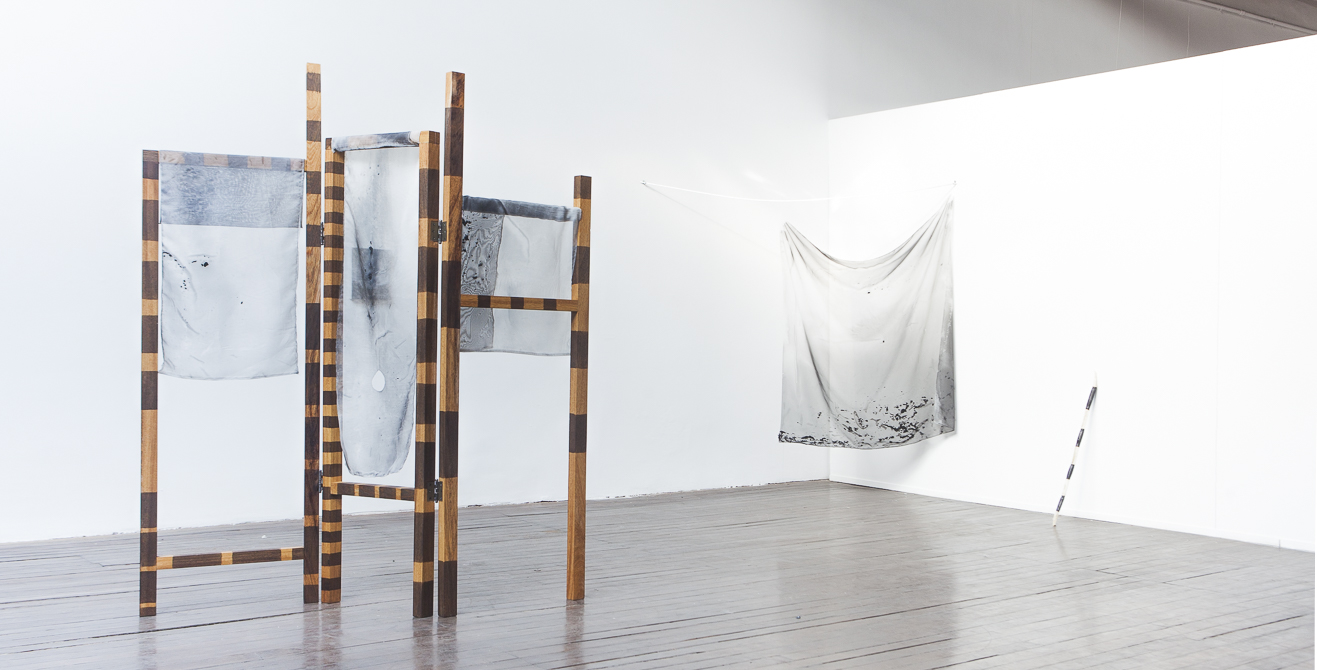
Acts of undress, Biombo
Cedro wood, ink, nylon & acrylic
220 cm x 250 cm
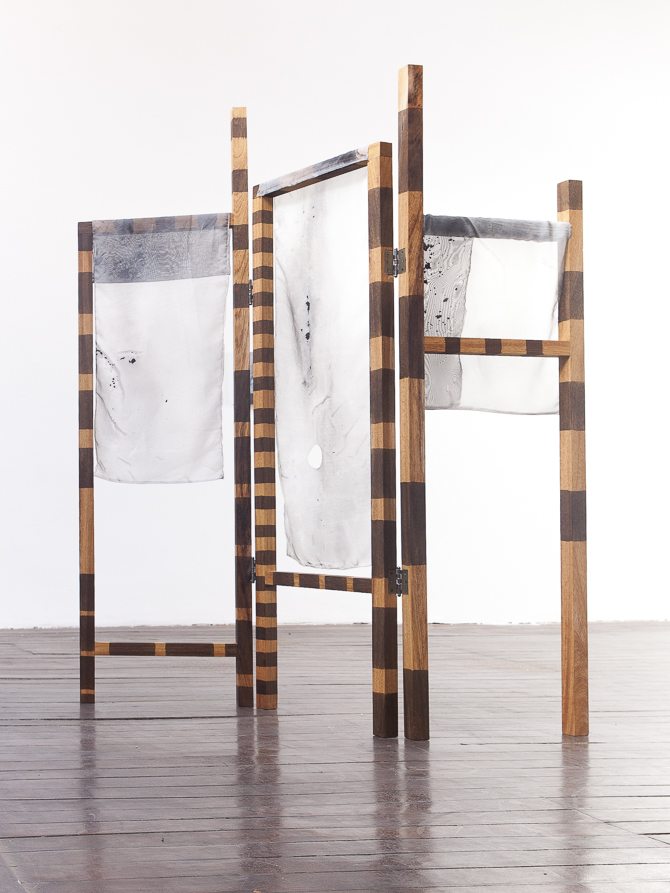
Queima 1, Bandeira
Nylon, acrylic paint with resin, Aluminum
220 cm x 177 cm (variable width)
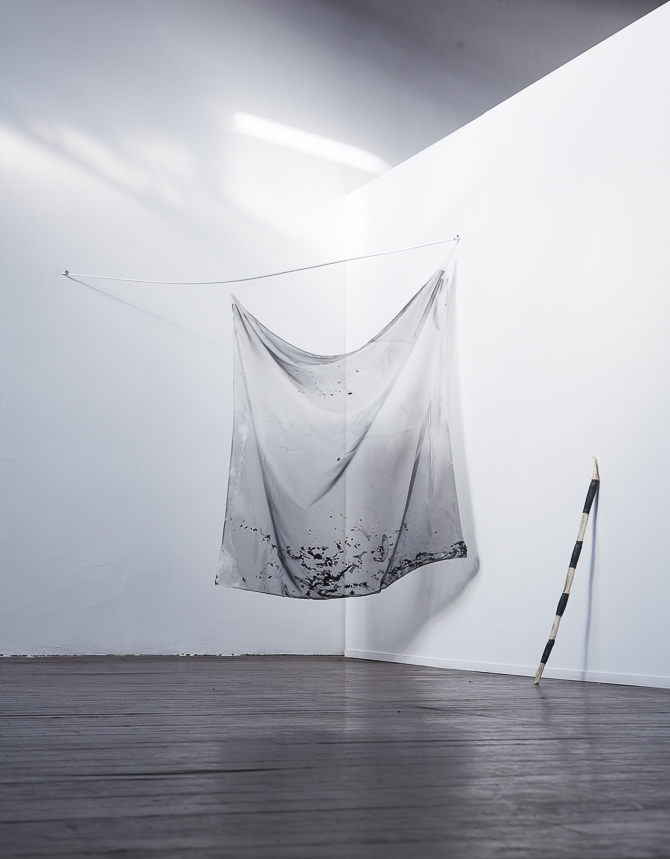
Queima 2
Nylon, acrilic paint with resin
140 cm x 143 cm
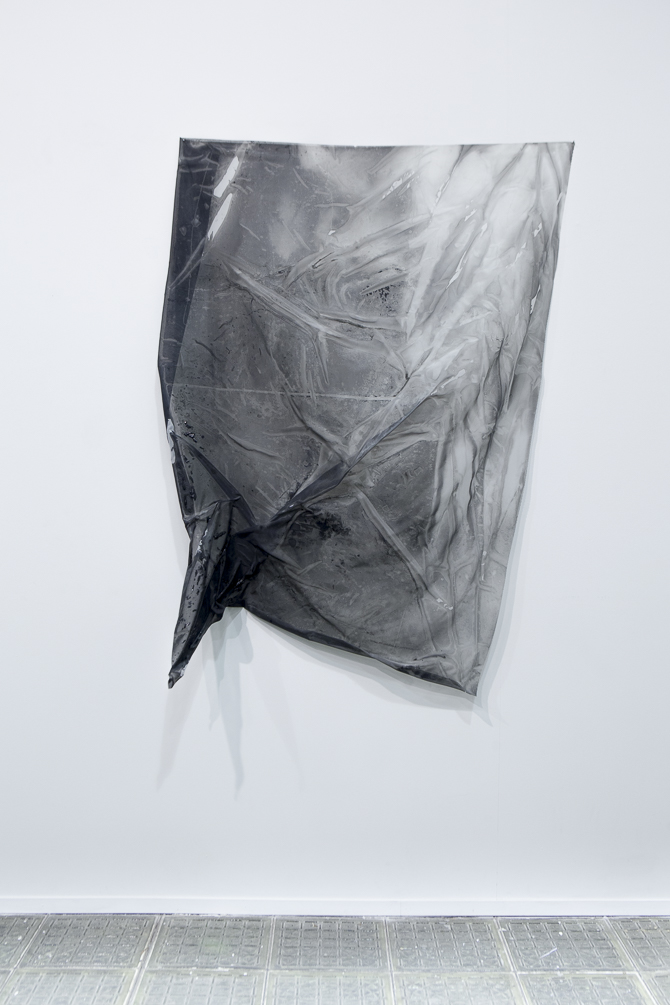
Cana de açucar com paralelos
Sugar Cane stick with acrylic paint
98 cm x 3 cm
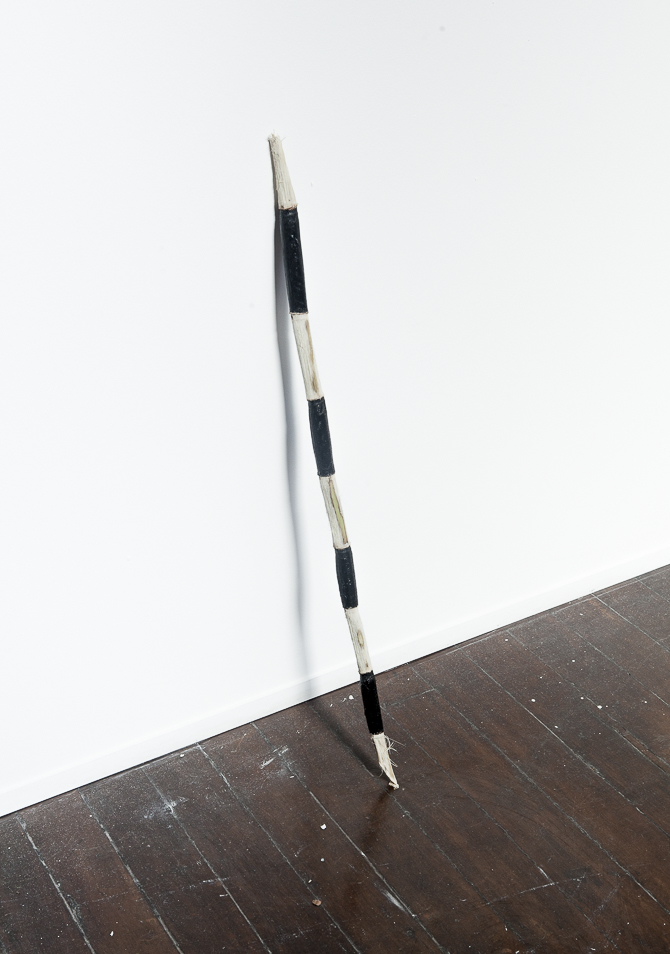
Queima 4, Trapos
Found painted wood, acrylic paint with resin on floor towels
170 cm x 200 cm
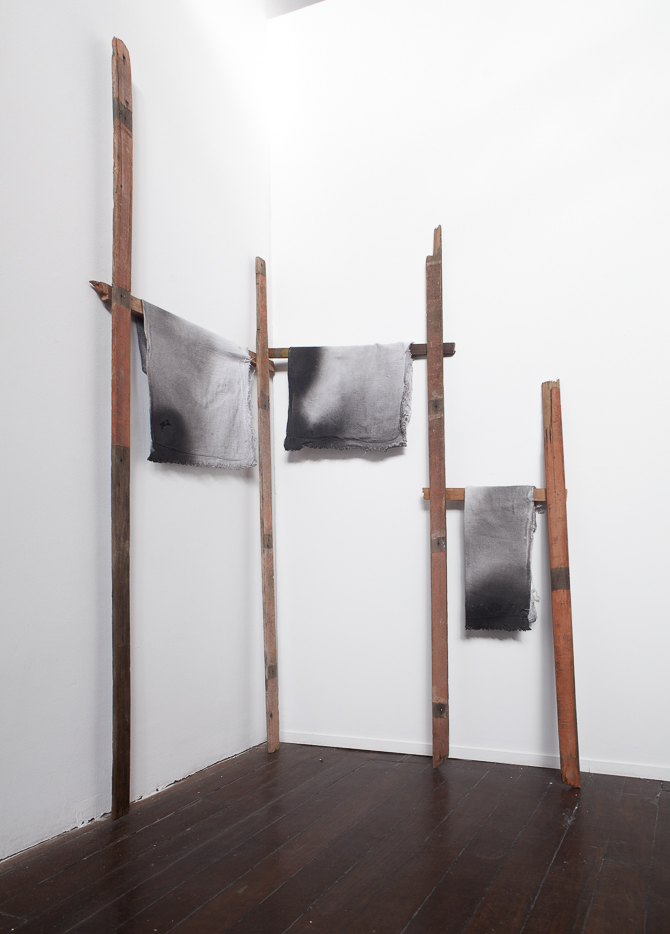
Detail

Text (Click to download):
The subject of sugar cane production and history is held as a site for his often archaeological – ethnographical practice, in which he seeks to dig in order to find remnants of something disclosed, hidden. His findings then get further obscured, blurred, or veiled into objects that hint at a place of their origin yet which also push us away from any possible direct render or solution.
Some works are painted fabrics that arrive from the smoke in the queimas, these paintings are produced over a nylon veil which is curtain-like, holding a see-through quality. Offering abstract forms that provide a hint into a smokey, ashy, nebulous landscape.
There is a dresser ‘biombo’ on-site, which after looking at some colonial objects and furniture, the artist has re-worked its form and produced a stripped-down version to its basic structural – frame.
Undressing a functional object of its original purpose, which in this case would have been covering the person undressing behind it, and in that act, bringing something of its puritan functionality and history out into the open. The biombo frame is then half-dressed again with some of the smoke queima paintings, which are now creating a liminal veil to that which is behind it, half concealing it half letting us see through it.
The biombo and sugar cane are painted in ornamental stripes that play in between the basic functionality of attention producing street signage, and the deeper use of such bodily deco by indigenous communities.